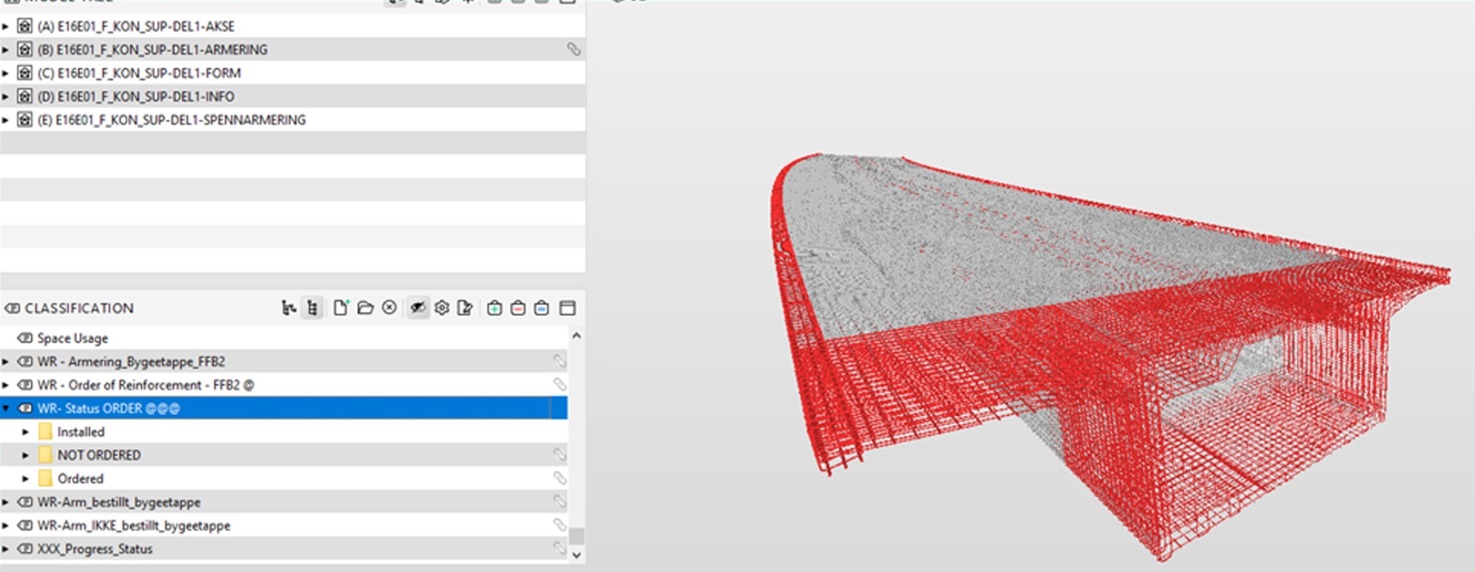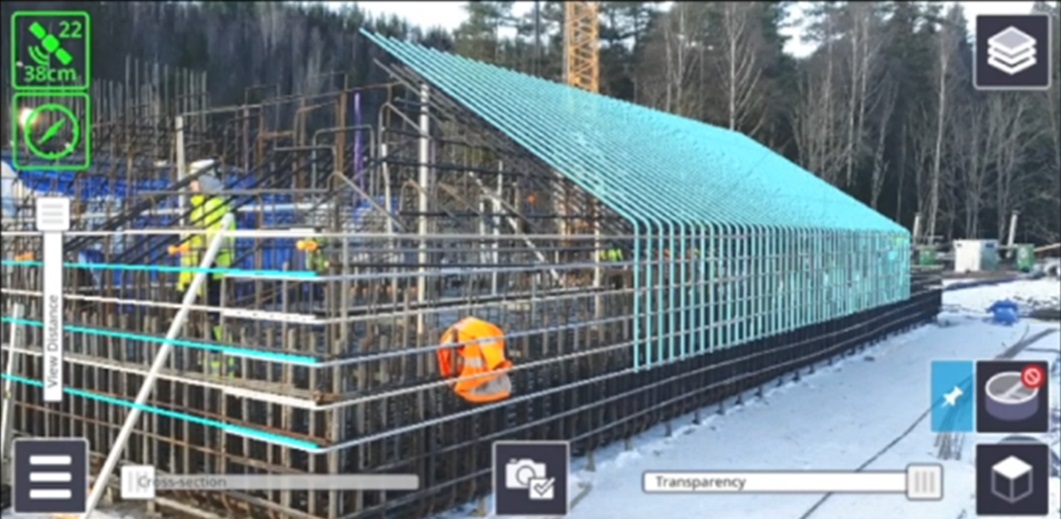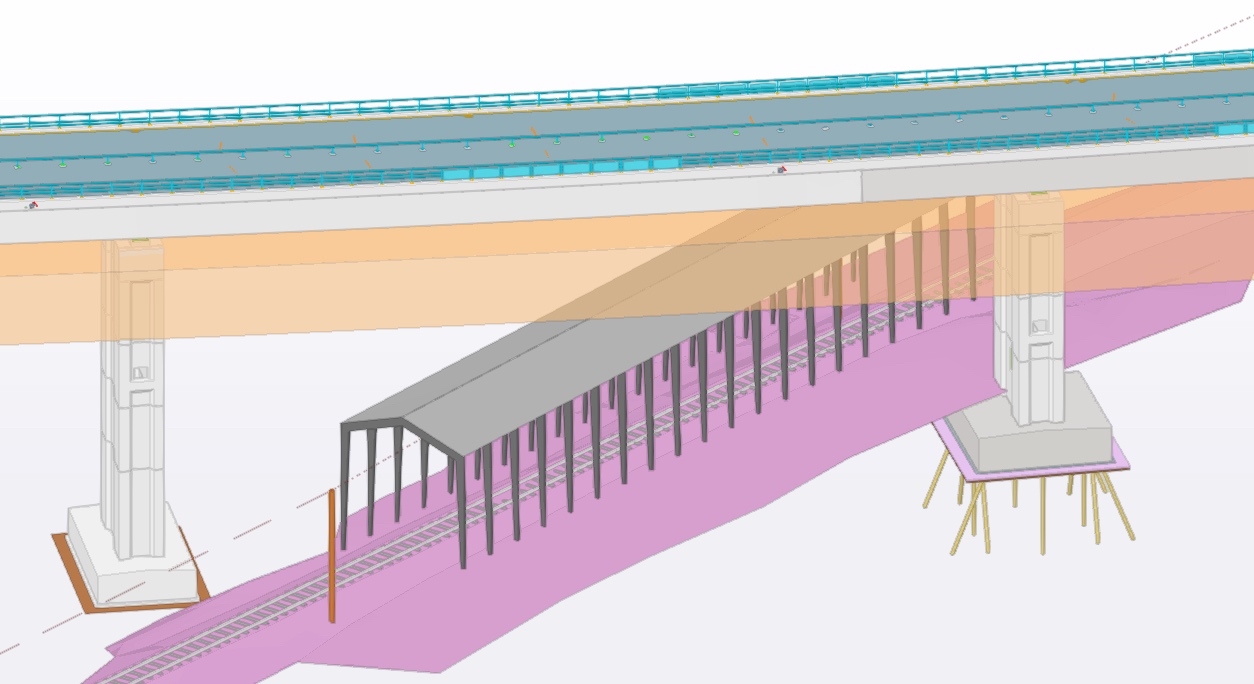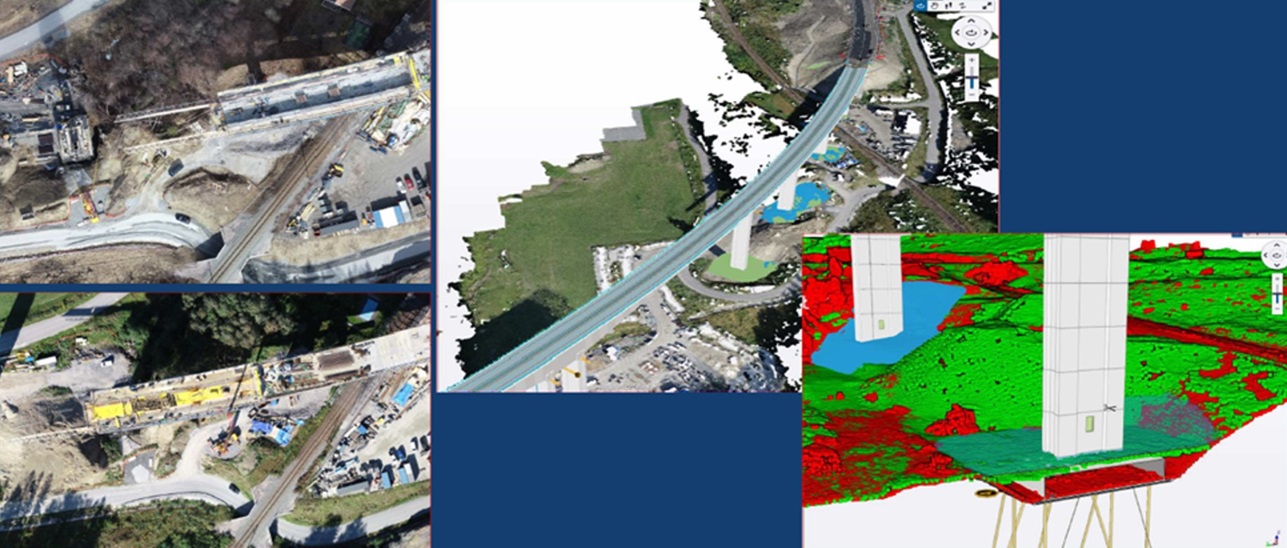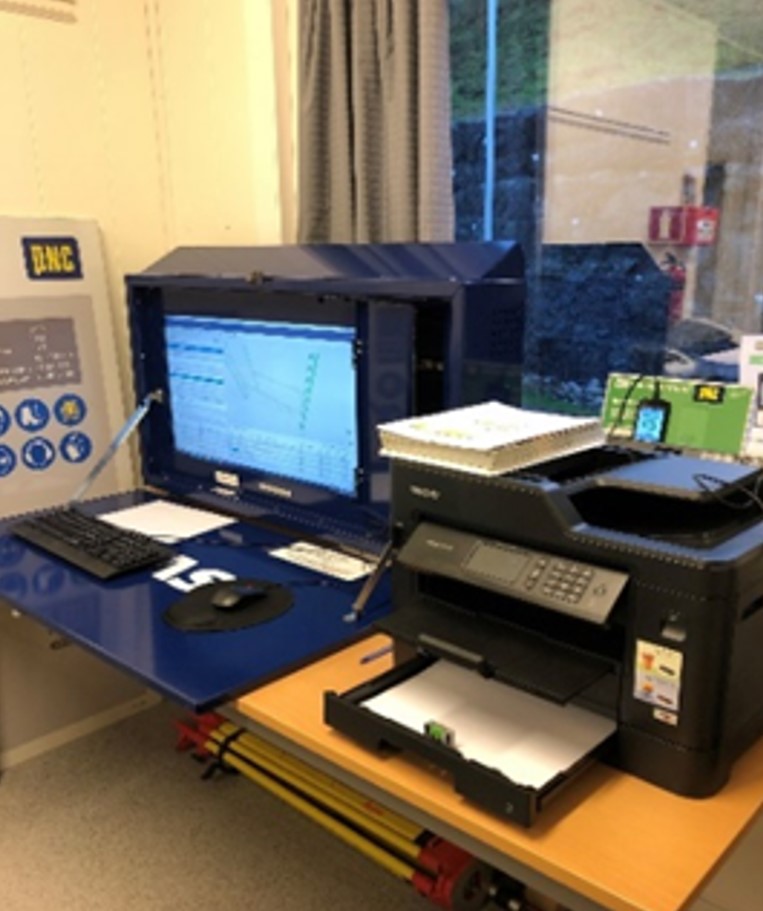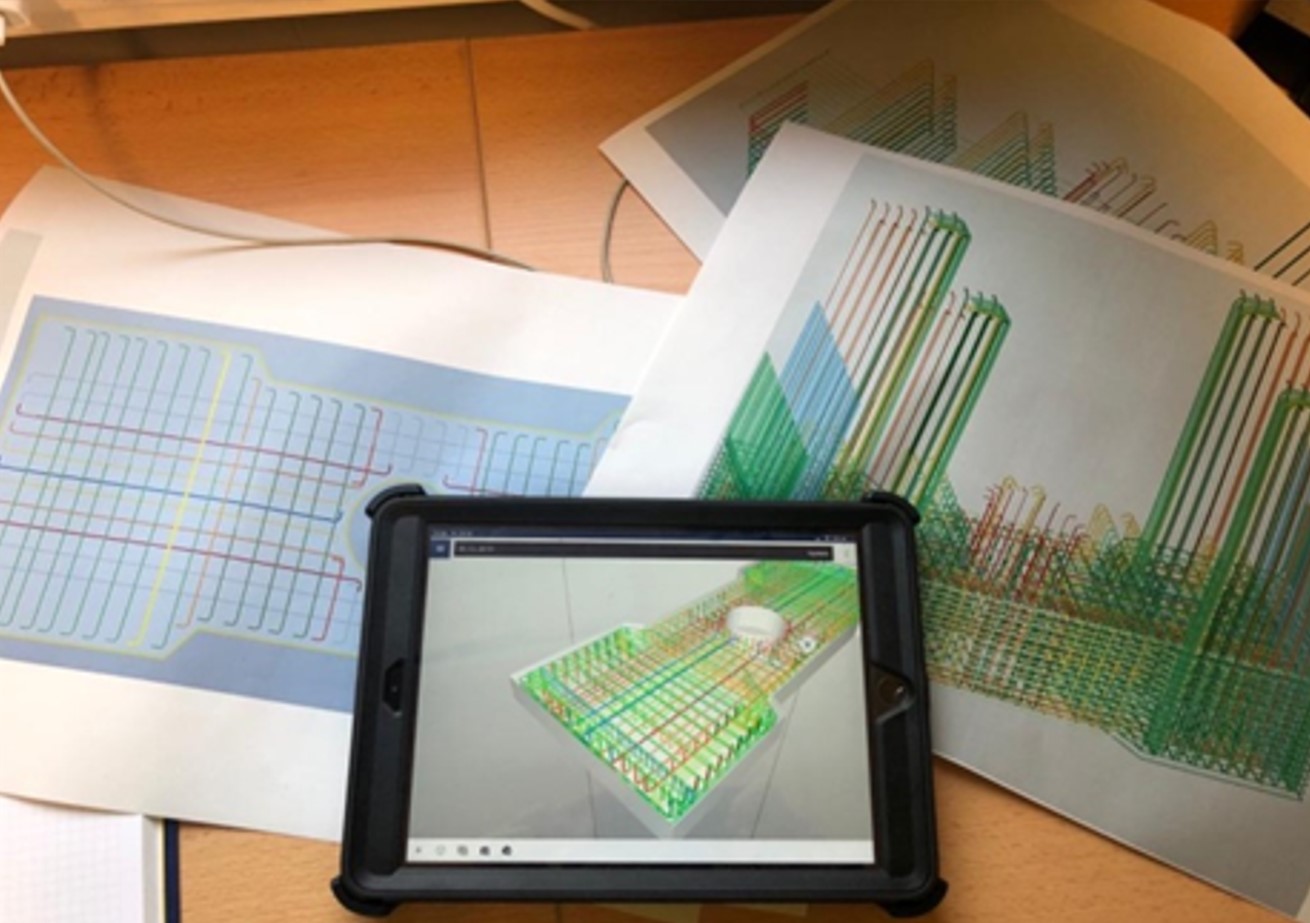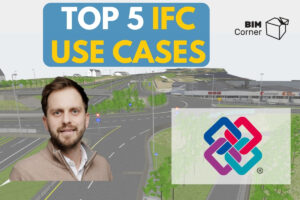Building the whole project based on models is still a novelty in the construction sector and there were very few reference projects available at the time of building the Randselva bridge. Especially for this size – the bridge is the biggest bridge structure built model-based to date.
In this third article, you can read about the challenges on the construction site and some practical solutions that were used in this fascinating model-based project: BIM workflow on site, choosing software for the right tasks, internal intro-course for the staff and the workers and BIM kiosk on the construction site.
Table of contents
1. About the project (first part)
2. Challenges for the design (first part)
3. Solutions in the design (first part)
3.1. Dividing the project into parts (first part)
3.2. Workflow (first part)
3.3. Software (first part)
3.4. BIM Execution Plan / BIM manual (first part)
3.5. ICE sessions and hackathons (second part)
3.6. Parametric design (second part)
3.7. Correct information in the correct place (second part)
3.8. Close cooperation with the contractor (second part)
4. Challenges on the construction site
5. Solutions during construction
5.2. Choosing software for the right tasks
This is the third part of the series about Randselvabru – the world´s longest bridge built without drawings. In the first part (read here), we had a look at the general project information, challenges for the design, and 4 of the solutions to those challenges. In the second part we covered the rest of the solutions for the design, like ICE sessions and hackathons, parametric design, correct information in the correct place and close cooperation with the contractor.
Now, lets see at the challenges and solution on the construction site!
4. Challenges on the construction site
The biggest challenges were connected with the usage of the BIM model on the site and included:
- Building bridge structure based on the model
- Contact with other project stakeholders
- Ordering materials and reinforcement from the model
- Competency and practical use of models
5. Solutions on the construction site
5.1 BIM workflow on site
BIM methodology from the design phase must be coordinated and developed by project engineers to control the construction site milestones. BIM is not only a 3D model. BIM is when the Construction Stage is capable of successfully using and analyzing data from the digital interpretation of the structure.
Management of “BIM” on the construction site can be described as a process that repeats until the highest MMI level of the Model is reached and the installation works are done.
When the contractor receives the Model with MMI300 when the construction site starts, the engineers are working together with the designer to develop as many detailed aspects of the construction as possible to be clear for further execution. This applies to technical issues, schedule, budgeting, procurement, safety, and project management. All internal processes required a specific type of data controlled in the 3D Model to be successfully useful during the execution phase.
The construction site has been delivered as a digital package of data
The production site has been equipped with tools such as BIM stations and IPads with relevant software for sharing the geometry and metadata. It has also been receiving packages of production workflow which did consist of 2D schemes based on Model with annotations, dimensions, and different cross sections that were prepared in a cloud in one of the BIM software. This allows less work with the Model directly on site and what is more, this way is easier to learn for the workers. This information package is responsible for delivering the understandable “Scope of work”.
The other package which is responsible for controlling the “Quality” might have been the assurance that everyone has access only to the latest 3D Model. Accurate and actual Work Breakdown Structure given together with reporting manpower and the schedule. All the above information can be used to enrich the Model locally and follow the status on a particular basis. The construction site has its own requirements to proceed with in order to finish the project within time and budget with safety first and quality best. In order to make it possible it is a very convenient way to connect the geometry and its object data with construction site information to have a better overview of the planning strategy.
5.2 Choosing software for the right tasks
There is a lot of different BIM-software on the market. One should choose the most suitable for the given task, depending on the purpose and on the type of structure as buildings or linear construction such as roads, tunnels, or bridges.
It is important to use some time to find the right software since this decision is connected with money (the licenses and courses cost) and time for implementing them in the project. And once a choice is made, it is difficult to change the software in the middle of the project.
On the Randselva Bridge project, the software was chosen on the base that it should be universal and already tested on a real bridge project. Below we present and describe the programs that were used for different tasks on the project.
Solibri Office / Anywhere
Solibri Office is a Management Tool for the BIM-methodology. The user is able to view, analyze and comment on the current model. It has more functionality than the single viewer although the layouts are the same at first.
The Solibri Anywhere is limited in additional views and therefore cannot produce any new issues. When using the Anywhere instead of the Office, the user can only see issues/slides but cannot create his own ones. There is a Solibri Site version that adds some of the functionality to the normal Viewer (like Issue Sorter etc.).
Software tool provide the possibility to load neutral exchange formats like IFC as well as their own format SMC.
– Individual rules can be set to generate any quantity take-off
– For better viewing, generating cross-sections and measuring all that is needed
Trimble Connect
Collaboration tool and cloud storage of all IFC files that are accessible for all stakeholders of the project. Easily could be updated directly from the designer 3D authoring software and works on every platform as Ipads, Android, and Windows. Used also for communication between parties about clashes or errors in the model to make the process of revisions faster and more clear.
Trimble Site Vision
The Contractor has been testing the right model for the AR tool called Trimble Site Vision. This is connected with Trimble Connect server where they stored the IFC files so the access to the live Model was with this tool very comfortable.
Trimble Connect made the application available to export the views to a native file that can be loaded into the Site Vision AR tool. It is important because before it was only possible to load the whole IFC files. This tool can be useful for client quality control on-site in regards to making the relevant checklist before construction proceeds.
AecoSim Building Designer (Bentley) / Revit (Autodesk)
Used by the contractor to model temporary structures – as for example steel tunnel to protect the railway under the bridge.
ITwo
Used for cost controlling.
MS Project
Scheduling the project.
Gemini
Point cloud data for surveying.
Pix4D
This cloud service enables to compare drone scanning from different dates that could be easily presented for any purpose during the construction or post-construction phase.
Tekla Structures (Designer) – 3D design
Used by the design office.
5.3 Internal intro-course for the staff and the workers
The construction industry is often seen as traditional, without a huge desire to change. Many workers are in their 40s, 50s, or 60s and are not as accustomed to the new technologies as their younger peers. It is why it is important to conduct a series of introductory courses for both the staff and the workers from the contractor.
This issue was recognized already in the tender phase on the Randselva Bridge project. Therefore, the main contractor, together with the designer, made an agreement to conduct two internal intro-courses about the model-based project and how to use Solibri. One was executed in the design office, and the other directly on the construction site. Thanks to that, it was possible to include and engage in them both the staff and the workers from the main contractor. The client was also invited to the second course, that was made on the site.
In addition, the BIM manager from the contractor taught several people that were responsible for construction how to use and understand the BIM models. There was also one person responsible for creating the printing information out of the model if the site needed relevant data in physical form – on paper. Besides them, all of the staff in the office were trained to use collaboration tools such as Trimble Connect to communicate and notice technical issues. Everyone had training in-house with Solibri software on how to look into the IFC models and to get as much as possible of the right information to be transferred to the site.
5.4 BIM kiosk and BIM tools
How to transfer the models with all the necessary information for building for workers to the construction site? Especially on a linear project, such as infrastructure with roads and bridges, where huge distances and weather elements have to be taken into account?
One of the solutions is to use a BIM station, or, how it is called in Norwegian, a BIM kiosk.
The contractor set a BIM station at the construction site so that everyone could have access to the current model. That was not only for the workers who executed the installation, but also for the staff, the client, or any of the suppliers or guests that were already on-site. It enabled to explain in a quick way what the bridge or its elements looked like.
The challenge came when the contractor had to build the construction according to the model. As all measures, cross-sections, and all the properties of an element could be checked on the computer, there were always questions about how to install the rebars without the drawings.
Solibri software was in use since the beginning of the project. BIM stations had all up-to-date IFC files read by Solibri via Dropbox as this software does not work on its own cloud solution. People got used to working on that one and just printed out some of the print screens and then described them manually.
The next step of developing it was an ongoing process via cloud server Trimble Connect where the contractor could make many different views with assigned information by them. They were then saved and shared to all people that worked on the project (and sent to the BIM station).
This could be taken also outside and once prepared, it can be used on IPads directly. This solution ensured that the contractor would have the latest data available. Also once it was created it was possible to easily edit anything wanted, while the paper drawings, in this case, have to be done from the beginning.
Summary of third part
In this third part of the series about Randselvabru – the world´s longest bridge built without drawings we had a look at the challenges on the construction site related to the model-based project, as well as some practical solutions to those challenges:
- BIM workflow on site
- Choosing software for the right tasks
- Internal intro-course for the staff and the workers
- BIM kiosk and BIM tools
Stay tuned for the next part, where we will cover the solutions for the challenges on the construction site!
Bibliography
In the creation of this series and the case study, we have used the following sources:
- RANDSELVA BRIDGE: PLANNING AND BUILDING A 634m LONG BRIDGE SOLELY BASED ON BIM MODELS Øystein Ulvestad, Sweco Norge AS Tiago Vieira, Armando Rito Engenharia SA
- RANDSELVA BRIDGE: CONSTRUCTION WITHOUT DRAWINGS Wiktor Rybus, BIM Developer, Sweco Norway (until 01/2022 PORR/PNC)
- https://e-brim.com/randselva-bridge-digital-twins-bim-in-south-korea/
- https://www.ringeriksavisa.no/arkiv/item/8429-randselva-bru-apner-uten-budsjettsprekk
- Authors of some of the photographs: Ståle Savland (SVV), Konrad Naborczyk (BIM Corner/Skanska
- Renderings: SWECO




